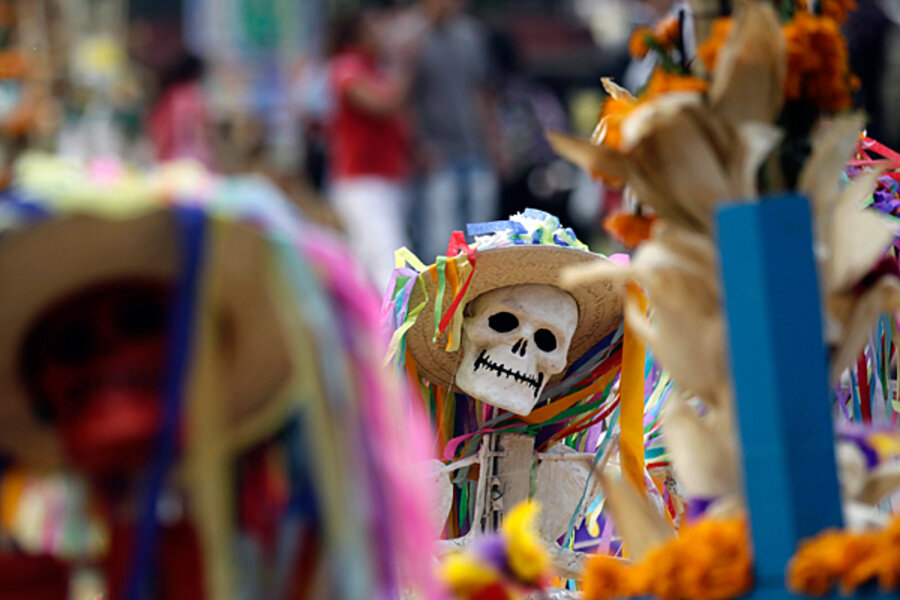Day of the Dead: Mexicans mourn loved ones
| OAXACA, Mexico
As soon as darkness fell, festive crowds streamed into the candle-lit cemeteries of this southern Mexican city and nearby towns by the thousands.
Day of the Dead falls on Nov. 2 but the celebrations in Oaxaca (pronounced Wah-ha-ca) begin days before with the creation of elaborate altars to the dead in homes. The offerings of flowers, fruit, bread, candles, and prayers rarely fail to include testaments to the more mundane aspects of the departed one’s earthly existence: playing cards and other relics of their old life such as yarn for the grandmother who loved to knit or a favorite sombrero for a father who never took off his hat.
For many across the country, the pain of a loved one’s death is fresh. More than 50,000 people have died in the six years since President Felipe Calderón deployed the military to fight the country’s brutal drug cartels and criminal organizations.
However great the collective mourning may be in Mexico, families in Oaxaca reminisced last night about their own lost loved ones in the traditional way: with music, food, tears, and laughter.
A somber celebration turns festive
After alters are built, next come the visits to the cemeteries.
Graveyards at night can seem the scariest of places – good for the setting of a horror film and little else – but in Mexico, on this Catholic holiday, the abundance of flowers, the sweet scent of candles, and low light seem romantic; when the bands strike up, the somber celebration turns festive.
Those who have lost loved ones hold all-night vigils at their tombs.
In the small town of Xoxocotlán outside Oaxaca City, locals adorn family graves with marigold-yellow xempazuchitl and magenta-colored “rooster’s crest” flowers. Here, long, flat gravestones are sometimes decorated with finely ground, colored rice and glitter to make images of saints or angels.
Last night Vicente Bautista and his brothers hovered over the grave of their father, who passed away in June. They drizzled the grains in a pattern to create an image of Santa Muerte, a skeletal representation of “saint death” widely worshiped by the poor and downtrodden in Mexico, but condemned by the Catholic Church.
“We’re holding vigil for papá until tomorrow morning,” Mr. Bautista says.
A powerful downpour in the evening left the narrow spaces between graves thick with mud, but that didn’t stop locals and tourists from winding through the dark labyrinth of tombstones to marvel at the decorations.
The Day of the Dead “is a centuries-old tradition,” says Bautista. “It’s an offering to our dead.”





